- Home
- Chimney Guide
- Chimney Crack Repair
Chimney Crack Repair
This post may contain affiliate links so I earn a commission.
Chimney crack repair is a scary subject for many old brick or stone chimney users.
While it is true that it can be an expensive and time consuming process to repair a crack, this is not always the case.
Some repairs can be done easily for a relatively little cost.
When dealing with chimney cracks it is important to first understand the chimney system, and some different methods of building chimneys both correctly and those that would not pass modern code.
That way you will be able to assess what type of crack your chimney has and establish a strategy to repair it.
Chimney Crack Repair - Basic Chimney Design Explanation
A masonry chimney is ideally an outer structure generally made of brick, stone, concrete blocks, or a combination of two of these.
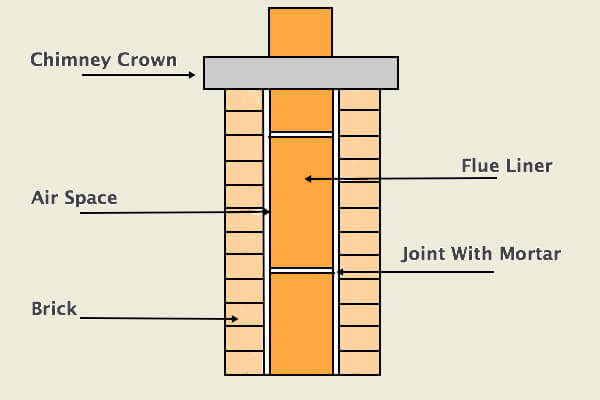 Basic Chimney Design
Basic Chimney DesignThe inside structure is typically constructed of a liner that should have an airspace around it, separating it from the main structure, and ensuring that a chimney fire will not be as likely to compromise the support structure of the chimney.
In older chimneys (the kind most likely to need chimney crack repair), and in some newer chimneys the “liner” is made square-ish tubular clay tiles.
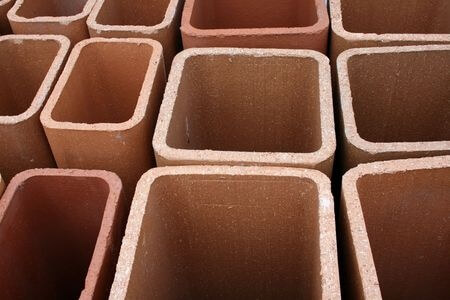 Clay Chimney Flue Liners
Clay Chimney Flue LinersWhen this liner deteriorates or cracks, it has to be repaired.
There are numerous ways to go about repairing or replacing the chimney liner, but that is outside of the scope of the focus of this article.
In our article on chimney flue repair, we go into the specifics of assessing and managing your damaged liner. Here we will focus on external cracks in the chimney support structure.
Chimney Crack Repair - What Causes Your Chimney To Crack?
There are numerous factors that can cause your external chimney to crack.
Most of these cracks will not require you to do extensive repairs.
As long as the foundation of the chimney is structurally sound, most other problems can be solved relatively easily.
Historically using bricks or even wall stone to make your external chimney was an economical choice in the long run.
The materials are easy to find and purchase, and the bricks themselves are easy to repair or replace.
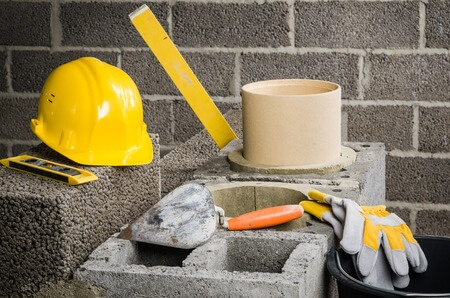
Unfortunately the modern fixation on prefab components which allows quick and easy construction has set up home owners in the future for greater costs and difficulty because a lot of prefab homes use a concrete chimney structure wrapped in siding.
These chimneys will be both harder to diagnose a dangerous problem that could result in flue gasses making it back into your home, and harder to repair effectively without demolition or major reconstruction of the structure.
While it is possible to repair concrete block in the chimney system, it is not as easy or efficient as simply removing and re-mortaring bricks or stone, like you can do with the older style chimneys.
Generally cracks in a chimney result from age, shifting foundations, or improperly made chimneys with no space separating the liner and the structure.
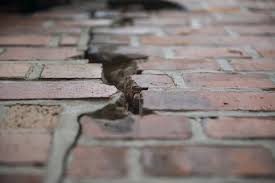
When the problem is from age, usually mortar joints have started to degrade and allow moisture in between the bricks or stones.
This will further crack the mortar joints and in worst case scenarios the bricks or stone as well.
If the chimney is cracking from a shifting foundation it is usually fairly easy to tell just by looking at it.
The continuity of the straight lines of the chimney will be broken near the base and there will be an evident gap.
Chimneys like this can still be repaired if the foundation seems stable and the chimney is monitored regularly after the mortar joints or bricks are repaired, making sure the replacement parts do not sag or shift over time.
The last option for chimney crack repair is the true worst case scenario.
If the chimney was built before building codes or in an area where there is none, it could have been done with solid fill construction.
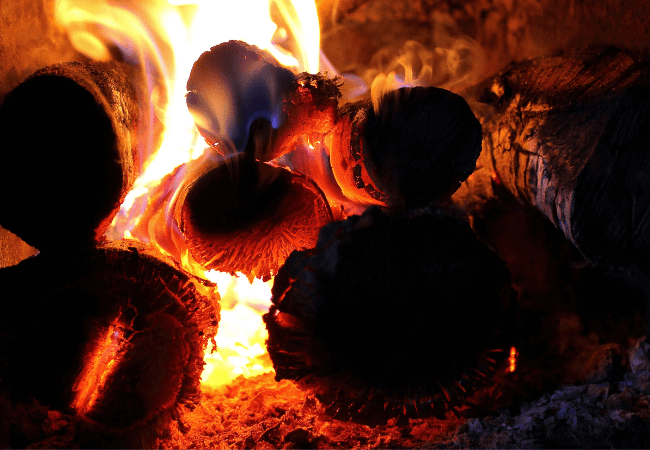
In the case of these types of chimneys, if there's a chimney fire that overheats the liner, it will also overheat the structure and cause it to start cracking.
Since the liner and the structure are attached and made of different materials they will stress each other every time they are heated.
If you find yourself with this type of situation, you may need to demolish that chimney and build a new one, unless the old liners were large enough to fit a new metal liner with the appropriate airspace around it.
Even then you would still need to do external crack repair to ensure the structure is sound.
External Chimney Crack Repair
Once you have established what repair your chimney needs and have formulated a plan it is time to do the work or call in a contractor.
Whatever your choice, it is important that you have an understanding of what needs to be done and the work required to accomplish it.
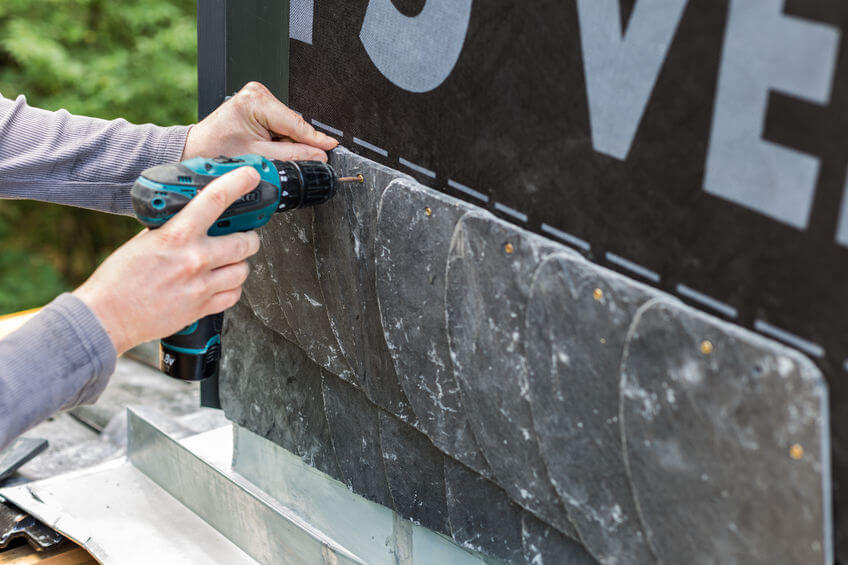
Even if you do have a contractor handle it for you, you can't know that it is being managed in your best interest if you do not know what your best interest is.
It is not unethical for a contractor to offer you the most complete and expensive service, after all they enjoy doing high level work they can be proud of.
If however you are on a limited budget, but cannot do the work yourself it would be in your best interest to know what lower price options might be available to you.
The external bricks or concrete blocks of a chimney provide the structure to support the inner chimney.
When their structure is compromised there is the potential in extreme circumstances for it to begin to fail.
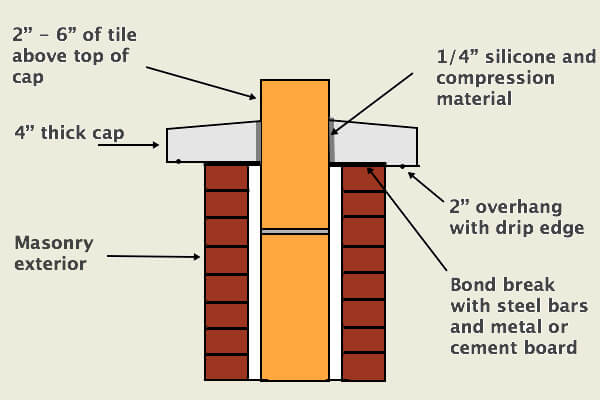
In the extreme, this failure would render the chimney unusable and dangerous, and could even be a danger to those walking around the grounds of the house.
It is best to assess and repair your chimney crack as soon as you notice it.
In some cases if the mortar is still solid you may even be able to use an all weather masonry caulking to seal the gap and prevent moisture from entering and expanding when frozen.
If your repairs are small and you know you have a structurally sound roof many repairs of a small section can be done off the roof or a ladder.
When larger repairs need to be done like removing more than a couple of bricks and mortar then replacing them, then you will need to bring in staging to allow you to safely move around the work area with heavy materials.
It is always important to ensure that any structural work you do is supported while being dismantled as well to ensure you are protected from it unexpectedly collapsing.
Chimney Crack Repair - Overall
Chimney crack repair is not a complex science.
With a basic understanding of the structure and understanding of how to work with some simple construction techniques and tools, you can handle most problems that arise with your chimney.
Those that you cannot handle or do not feel inclined to, you will understand well enough to make informed decisions about the repair by qualified contractors.

About the Author
Obsessed with firewood, Nick is behind over 350+ of Firewood For Life's articles, as well as countless reviews, guides and YouTube videos to help readers like you reduce heating costs and create the perfect fire.


